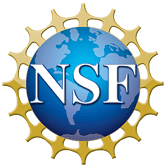CCSM run aschmidt, Atmosphere Climatology, Unspecified Time Frequency, version 1
To Access Resource:
Questions? Email Resource Support Contact:
-
Michael Mills
mmills@ucar.edu
UCAR/NCAR - Atmospheric Chemistry Observations and Modeling Laboratory
Temporal Range
-
Begin: 1979-01-01 End: 2015-01-01
| Resource Type | dataset |
|---|---|
| Temporal Range Begin | 1979-01-01 |
| Temporal Range End | 2015-01-01 |
| Temporal Resolution | N/A |
| Bounding Box North Lat | N/A |
| Bounding Box South Lat | N/A |
| Bounding Box West Long | N/A |
| Bounding Box East Long | N/A |
| Spatial Representation | N/A |
| Spatial Resolution | N/A |
| Related Links | |
| Additional Information | N/A |
| Resource Format |
application/x-netcdf |
| Standardized Resource Format |
NetCDF |
| Asset Size | N/A |
| Legal Constraints |
Creative Commons Attribution 4.0 International License. |
| Access Constraints |
None
|
| Software Implementation Language | N/A |
| Resource Support Name | Michael Mills |
|---|---|
| Resource Support Email | mmills@ucar.edu |
| Resource Support Organization | UCAR/NCAR - Atmospheric Chemistry Observations and Modeling Laboratory |
| Distributor | N/A |
| Metadata Contact Name | GDEX Curator |
| Metadata Contact Email | datahelp@ucar.edu |
| Metadata Contact Organization | UCAR/NCAR - GDEX |
| Author |
Schmidt, Anja Mills, Michael J |
|---|---|
| Publisher |
UCAR/NCAR - GDEX |
| Publication Date | 2021-10-21 |
| Digital Object Identifier (DOI) | https://doi.org/10.5065/D6C53JPS |
| Alternate Identifier | N/A |
| Resource Version | N/A |
| Topic Category | N/A |
| Progress | N/A |
| Metadata Date | 2022-07-21T11:56:20-06:00 |
| Metadata Record Identifier | edu.ucar.gdex::93ba060c-33a4-42ca-b1e9-5b7c8ee3c49e |
| Metadata Language | eng; USA |
| Suggested Citation | Schmidt, Anja, Mills, Michael J. (2021). CCSM run aschmidt, Atmosphere Climatology, Unspecified Time Frequency, version 1. UCAR/NCAR - GDEX. https://doi.org/10.5065/D6C53JPS. Accessed 13 April 2025. |
Harvest Source
- ISO-19139 ISO-19139 Metadata

